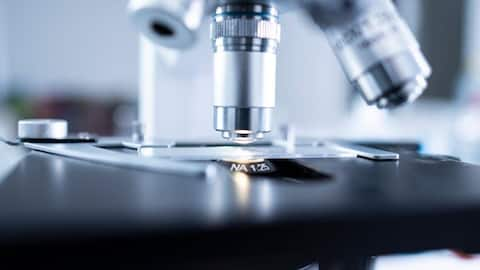New antibiotic class, macrolones, may tackle superbug threat
What's the story
A new class of antibiotics known as macrolones could potentially offer a solution to the escalating problem of antimicrobial resistance.
The World Health Organization (WHO) estimates that in 2019 alone, antimicrobial resistance was directly responsible for 1.27 million global deaths.
This growing resistance among bacteria, parasites, fungi and viruses poses a significant threat to human health worldwide.
Research findings
Macrolones offer a potential solution to antibiotic resistance
A recent study from the University of Illinois Chicago and the Beijing Institute of Technology has shed light on macrolones, a promising class of drugs.
Alexander Mankin, the senior author, explained that the antibiotic's effectiveness lies in its ability to target and kill bacteria through two different mechanisms.
He stated that if the antibiotic hits both targets at the same concentration, then bacteria lose their ability to become resistant via acquisition of random mutations in any of the two targets.
Drug composition
Macrolones: A unique combination of two antibiotics
Macrolones are synthetic compounds that merge two widely used antibiotics, each targeting bacterial cells from different angles.
The first group includes macrolides like erythromycin, which block the ribosome and prevent bacteria from efficiently manufacturing proteins.
The second group comprises fluoroquinolones like ciprofloxacin, which target a bacterial enzyme called DNA gyrase and stop DNA from achieving the correct structure.
Study results
Macrolones show promise in overcoming bacterial resistance
The research team synthesized various macrolones and studied their effects on bacteria.
One candidate stood out as it targeted both cellular processes equally at its lowest effective dose.
Yury Polikanov, an associate professor and head of one of the labs involved in the research, explained that targeting two sites simultaneously at the same concentration makes it nearly impossible for bacteria to develop a simple genetic defense.
Future prospects
Macrolones: A beacon of hope against antibiotic resistance
Some macrolones could even continue to target the ribosome when bacteria had evolved a resistance mutation that usually prevents traditional macrolides from working.
The further development of these promising compounds could provide some of the best hope for drugs that can counter the "antibiotic apocalypse."
Mankin concluded that the key takeaway from the research is the understanding of the need to advance in a specific direction.
He emphasized to chemists the importance of optimizing macrolides to target both mechanisms.
